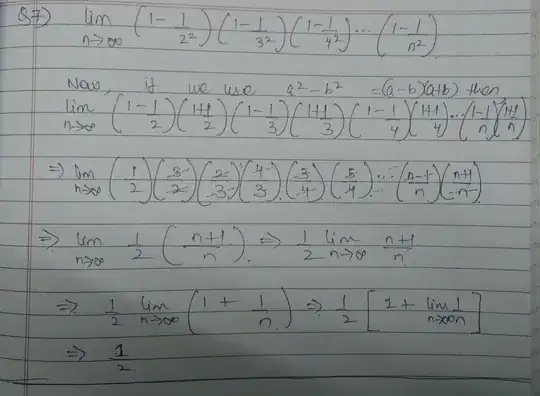I tried solving an infinite limit like this and got the answer as 0.5 I think there's a flaw in my approach. Please suggest a better approach.
Asked
Active
Viewed 149 times
3
-
1...this looks alright to me. – Franklin Pezzuti Dyer Jun 13 '17 at 20:12
2 Answers
2
HINT:
Note that
$$\begin{align} \log\left(\prod_{n=2}^N \left(1-\frac1{n^2}\right)\right)&=\sum_{n=2}^N \log\left(1-\frac1{n^2}\right)\\\\ &=\sum_{n=2}^N \left(\log(n+1)-\log(n)\right)+\sum_{n=2}^N \left(\log(n-1)-\log(n)\right) \end{align}$$
Now, exploit the telescoping series.
Mark Viola
- 179,405
-
Oh alright. This looks quite interesting I ll do this also thank you. – user435390 Jun 13 '17 at 20:23
-
-
-
-
0
With shorter notation
$$\prod_{n=2}^\infty\left(1-\frac1{n^2}\right)=\prod_{n=2}^\infty\left(1-\frac1n\right)\left(1+\frac1n\right)$$
But
$$\left(1+\frac1n\right)\left(1-\frac1{n+1}\right)=\frac{n+1}n\cdot\frac n{n+1}=1$$
and thus all the factors after the first one cancel with each other and you indeed get $\;\cfrac12\;$ , so: good work!
DonAntonio
- 211,718
- 17
- 136
- 287
